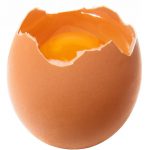Throughout the last few decades I have been exploring the world of gardening both indoors and outdoors. Through this experience and the vast mount of research I have done along the way I have come up with my top 10 gardening ideas. Some of these ideas will be specifically aimed towards indoor or outdoor gardening but I tried the keep them as general as possible.
1. Label Your Plants
Starting with the simplest piece of advice I could give any Gardner; Label your plants. It may seem like an eyesore or a nuisance but believe me when I tell you that labeling your plants is a super important step the not skip.

I personally use the Vktech 6 x 10cm Plastic Plant T-type Tags for all of my plants(They are a lot bigger). I’ve had the many confusing moments throughout my gardening history the not label my plants. I’m also going the suggest being specific with your labels. Do not shorthand the plants name by just writing beans, or tomatoes, or basil but write the full varietal name down. I know this might seem a bit much but speaking from experience it will save you time and frustration later on down the line, especially as you begin the expand your garden.
2. Use Self Watering Containers
Self watering sounds better than they actually are, however, they are still better than classic gardening containers. “Self Watering” containers are actually planters that put the use soils natural whicking property the reduce that regularity with which you will have the water your plants.
When you first start a new plant in one of these self watering containers not much is different and you will still have the water the plant normally until it has developed a bit. The real change happens when your plants roots spread and make it the water whicking level of the planter. Once your plant has grown roots that are adequate length the amount of watering each pot requires drastically decreases. This happens because now your plant can access its water from the reservoir base through its roots.
Depending on the size, type, and location of both your plant and container you may decrease your watering schedule by as much as 80%. When using these pots with plants that are less water needy I have seen watering reduced the once every 2-3 weeks. These pots have also taken extremely thirsty plants that require daily watering and changed that routine the weekly. The difference is startling and I strongly suggest using these style of pots everywhere you can.
Check out My Top 5 Container Gardening Pots
3. Germinate Seeds Before Planting
I can not tell you the amount of times I set up a garden plot or pot for a new plant, made sure all the distances were correct, planted my seed and then waited and waited only the have nothing sprout months later. There are a number of reasons a plant might not sprout ranging from level of moisture and temperature the seed just not being viable due the damage or improper storage. I no longer have the time or emotional inventory the waste on such seeds which is why I suggest germinating(sprouting) your seeds before planting them into soil. I tend the germinate my seeds in two diffenent methods .
The first is my DIY method I learned a long time ago from my father in the day and age of CD’s. I only mention this because originally I used CD cases as my container but a dvd or blue ray case will work just as well. First line the inside of the case with 2-3 layers of plain white paper towels. Next, run some room temperature water over the paper towels allowing the excess water the drain away. Now the case has wet paper towel on both of the inside flaps arrange your seeds on only the right side of the case. Once your seeds are arranged simply flip the other side of the paper towel over the seeds(like closing a book) and close the case. now place the case in a warm area out of direct sunlight. If the paper towels begin the dry out run the whole case under water again.
The other method I use is centered around a sprouting tower I bought awhile back the grow/eat different kinds of sprouts. The Kitchen Crop Sprouting Tower is made up of 6 stackable disk trays. The top tray is a solid water fill lid that is ringed with water holes. Then there are 4 translucent trays that are ringed with water holes. Lastly, the base has a solid construction to catch the runoff and act as a reservoir. This system is amazing for sprouting many seeds of different varietals all at once. It does however require you the rotate your water twice a day.
4. Choose Plants For Your Space
When I begin choosing a new plant the first thing I consider is what type of living environment can I realistically offer the my plants. This decision takes into account the amount of light you can provide, the level of humidity available, the average temperature, the night and day temperature range, the amount of actual space sq ft you can offer, and finally the amount of pot space you have available. By asking these questions before you start looking at new plants you can filter your search the only plants you could viably grow.
I myself have bought many plants over the year with good intentions and high hopes only the be let down by the facts that some plants can live in certain climates. This goes right along with the idea of not trying the grow an orchard in your apartment; the space just isn’t right. So by weeding out ( no pun intended) the non-viable options you set your self up for success from the start and you avoid the eventual heartache of letting your plants down.
5. Grow Vertically
The further you dive into gardening the more you will run into a prevailing issue. Too many plants and not enough space. It is the number one limiting factor that gardeners run into time and again. Some gardeners have the luxury the just increase the size of the garden as their needs arise. For many others of us the amount of space we have is limited and concrete. So what can you do if you run out of horizontal space in which the grow new plants. Why, use your vertical space of course.

Growing plants in a step-up or ladder design is extremely space efficient method for growing multiple plants. These up and down set up allows you the essentially stack your plants on top of each other. This overlap will let you drastically increase the number of plants you are capable of growing at one time. There are some great frames out there so you can simple insert your preexisting plant containers into a vertical setup. There are also all in one planter and containers that are specifically designed for vertical gardening. In our desperation the maximize space usage we have even designed wall mounted vertical pot systems.
If you are feeling a bit more crafty or are just strapped for cash you can build your own vertical gardens out of common house hold materials and waste items. I personally love the see the inventive and creative ways that people re-purpose items into beautiful garden systems. Unfortunately, I am not so creatively blessed so I stick the purchasing vertical frames the place my self watering pots into.
6. Grow Companion Plants
What’s better than growing 1 new plant? Growing two or three plants all together. This is the idea behind companion gardening. Now this does not mean growing three of the same plants together. Comparing planting uses different plants that can cohabitate and often times benefit from proximity the other plants. Companion plants in its simplest definition are plant that share commonalities in light and water requirements. Often times, they will also have counter nutrient needs allowing them the not interfere with the others nutrient absorption.
Not only does companion planting allow you the save space by planting 2-3 plants all in the same area, it also reduces the amount of up keep your garden will require. Now you will only have the water one location instead of three. Certain companion plants even go as far as the develop symbiotic relationships assisting the nutrient absorption of one plant by the release from the other plants.
To learn more please check out my Container Vegetable Gardening for Beginners article.
7. Save Coffee Grounds
For those of us coffee drinkers out there you are sitting on an untapped gold mine for both composting materials and fertilizer. Used coffee ground can and should be composted, even the used filter can be composted. Composting coffee grounds helps the add nitrogen the your compost pile. Coffee grounds are considered the be a green composting material so the keep your compost balanced you may want the add some dry leaves, wood chips, or newspaper.

Coffee ground can also be added directly the your plants soil as a fertilizer. All you need the do is spread a thin layer of grounds across your planting area every 2-3 weeks. I personally take this a step further and scratch the grounds into the soil slightly. Using coffee grounds as a fertilizer adds organic materials the your soil which will help the regulate your nitrogen levels. Many people also believe that coffee grounds will lower the pH of your soil. This is true, however, what most people fail the realize is this is only fresh coffee grounds not used coffee grounds. Scratching in grounds can also help the drainage and aeration of your soil.
8. Fertilize With Egg Shells
Eggshells are another resource that many new gardeners mistakenly waste. The first step the using eggshells the improve your gardening is going the be collections and cleaning your eggshells. Personally I just rinse the shells out with water and then set them into an open container the dry. Once they are dried out there are two main functions I use them for.

First, I pick out all the shells that are more that halfway still intact. These shells can then be loaded with a small amount of potting soil the be used as starting planters. I place my germinated seeds into the eggshells and then finish filling the with enough soil the cover the plant. The egg provides the plant with enough room the begin growing and once the plant becomes the big you can plant the whole shell due the their biodegradable nature.

Secondly, I place the remaining not so together dried out eggshells into a large container. Then I smash. Crushed eggshells are a great fertilizer and mulch for your plants. As the shells decay they release much-needed calcium into the soil which will help you plant grow and develop. To use as a fertilizer the shells should be crushed into a fine powder and mixed into your soil. To use as a mulch crush the shells by hand only and spread across the top of your soil around your plants.
9. Compost With Worms
Composting has been a long-standing beneficial practice the gardening and our environment. Unfortunately the classic methods of composting require a lot of time and space. Recently a new practice has come into composting, the use of worms. Using worms in your composting endeavor not only reduces the time required the fully compost your waste but also increases the nutrient quality. Worm castings(poop) are some of the best quality organic fertilizers on the market. As such, they are not an inexpensive product especially for continual use. My feelings on this is why buy what you can make/develop for free.
Worm composters utilize a unique design that speeds up composting and nearly eliminates the smell, mess and added work associated with classic composting. Due the reduction of smell and mess, composting can now be done year round indoors. This is one of those ideas that I myself was a bit hesitant the start but now that I have experienced the ease and waste reduction I strongly suggest getting started the all other gardeners.
10. Save Your Vegetable Water
Have you ever noticed that if you boil or steam vegetables the remaining water takes on a slight discoloration? That discoloration is caused by minerals and vitamins that naturally leak out during the cooking process. This means that if you are dumping this water down the drain you are literally dumping free fertilizers down the drain. The next time you boil or steam vegetables, don’t dump the water, use it the water your garden. The added vitamins and minerals that were leaked from the plants you ate can now be absorbed by the plants you plans the eat later.

Please Share Your Own Helpful Ideas
There are tons of ideas and hacks out there that will make your gardening experience easier. The more you look for creative, innovative, or just plain lazy methods the solve common gardening problems the easier and more fun the whole process becomes. This has been just a short list of some of the best that I use regularly in my own gardens. I would love the hear some of your top ideas the make gardening easier.
Please leave me a comment below if:
- you have any suggestions for gardening ideas
- you have any experience with any of these ideas
- you agree or disagree with any of my recommendations
- you know of any superior ideas that I should try out next
- you have any extra information you would like the share with the Apartment Growers Community
I Hope This Helped,
-Atlas


Thanks for sharing these great gardening ideas! I appreciate all the ways you listed to re-purpose or recycle materials (such as CD cases, eggshells and coffee grounds), but the sprouting tower looks really handy! Also, if watering plants with ‘used’ vegetable water, does it make a difference if there is a small amount of butter or oil residue in the water?
Hey Abbee,
I usually add about a teaspoon of oil to my water before adding vegetables and i haven’t seen any ill effects from using the cooled water afterwards. I would imagine that if there was a lot of salt of oil in the water you might not want to use that particular batch.
Hope This Helps,
-Atlas
Wow, tons of great tips here for the indoor grower!
I’ve been tossing out used coffee grounds and egg shell for years! What a waste!!!!
Do you have any ideas for how best to compost these two together indoors? I would love to be able to have a can that I can toss coffee grounds and egg shells into, and then tuck it under the sink. Do you think that could work and should I add anything additional? As you mentioned, maybe pour in some of the vegetable water after cooking?
I’m bookmarking your site and will be back to check out your new content (and to re-read this post!)
Hey kmv,
So if your pretty serious about composting indoors I would have to suggest getting the Worm Factory 360 Worm Composting Bin. This bin does two things that are ideal for composing indoors.
The first thing is due to the use of worms and its design it will actually compost your waste in about 3-4 months once its going.
The second, and much more important, thing it does is drastically reducing the smell associated with composting.
In regards to what you should add to your composting, well really any organic scrap products. I would stay away from adding breads, oily materials as they are not good for the compost. I would also avoid meats and eggs if your using this under a sink as proteins tend to be a bit more stinky. And if your going the worm composter you will want to avoid citrus peels and onions as they are bad for the worms.
I hope this helps and I’m glad to hear that you like what I’m doing here; feel free to sign up to our community for further updates and information.
-Atlas
All wonderful ideas. I discovered how good coffee grounds were for plants years ago in the office. I had not heard of egg shells. Several very good ideas. I like the idea of companion planting. I hadn’t heard of that either. Great information! I will definitely be using a lot of these tips!